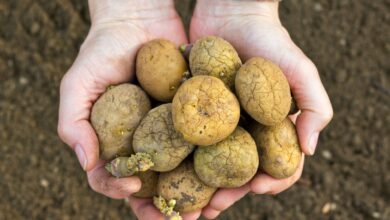Potato hollow heart: What to do in case of potato hollow heart disease

Growing potatoes is full of mystery and surprises, especially for the beginning gardener. Even when your potato crop comes out in perfect condition, the tubers may have internal defects that make them look sick. A common problem is potato hollow core, which is caused by alternating periods of slow and rapid growth. Read on to learn more about potato hollow heart disease.
Potato hollow heart disease
Although many people refer to hollow heart disease as potato disease, no infectious agents are involved; it is a purely environmental problem. You probably won’t be able to tell the difference between a hollow heart and perfect potatoes until you cut them, but by then it will be obvious. Hollow core potatoes show up as an irregularly shaped crater in the heart of the potato – this empty area may show a brown discolouration, but this is not always the case.
When environmental conditions fluctuate rapidly during potato tuber development, a hollow heart is a risk. Stressors such as irregular irrigation, large amounts of fertilizer or highly variable soil temperatures increase the likelihood of a hollow core developing. Rapid recovery from stress at tuber initiation or swelling is thought to tear the potato core, causing the crater to form inside.
Prevention of potato hollow heart
Depending on local conditions, it can be difficult to avoid hollow pits, but following a regular watering program, applying a deep layer of mulch to your plants and spreading the fertilizer in several small applications can help protect your potatoes. Stress is the number one cause of potato hollowing, so make sure your potatoes get everything they need right from the start.
Planting potatoes too early can play a role in the hollow heart. If hollow heart invades your garden, wait until the soil reaches 60 F. (16 C.) can help prevent sudden growth. A layer of black plastic can be used to artificially heat the soil if the growing season is short and potatoes need to come out early. Also, planting larger pieces of seed that have not aged much seems to be a protection against hollow pits because of the increased number of stems per piece of seed.




